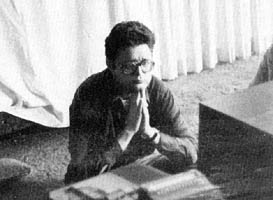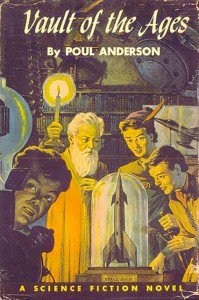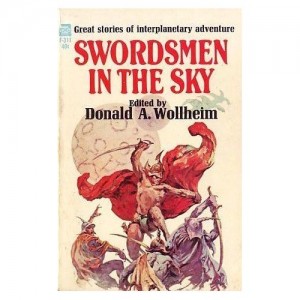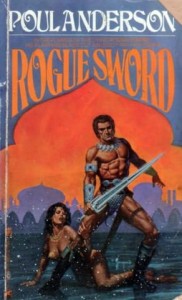Remembering Poul Anderson
Wednesday, November 25, 2009
posted by Deuce Richardson
 Print This Post
Print This Post

Poul Anderson would be eighty-three years old today. That means I’ve been reading his fiction for about thirty years now. The realization of that would be even more twinge-inducing if I didn’t constantly remind myself that I was  a mere thirteen years old when I started.
a mere thirteen years old when I started.
My love for Poul’s writing began when I bought a first-edition copy (1952) of Vault of the Ages from the Oswego Public Library (the same institution from whence I purchased my first Harold Lamb and Merritt books). Alex Schomburg dustjacket/endpapers and everything. All for one shiny quarter (the library ended up rebuying the book in paperback). The second (or first?) Anderson novel ever published.
“Vault” was a pretty good introduction to Poul Anderson for a thirteen year-old. The book was written for the “Young Adult” market, with a certain proportion of the sermonizing that genre usually requires. On the plus side, Poul based his novel around a post-apocalytic setting, provided numerous great combat/battle scenes and featured “northern barbarians” as sympathetic antagonists whose narrative purpose was to give a stagnant culture a shot in the arm.
Sound familiar? Robert E. Howard was a post-apocalyptic writer. Whether one is talking about Conan or James Allison’s past incarnations, let alone such yarns as “The Last Laugh,” Howard envisioned many of his heroes as existing in a world that had gone through hell/been rebooted. Vigorous barbarians, relatively untainted by the past, would then begin building a world based on principles more natural to the human psyche.
 Poul Anderson (along with Leiber and Brackett) kept the freak flag of heroic fantasy flying in the 1950s. Brackett took the “crypto-fantasist” route exclusively (as Anderson sometimes did in stories like “Swordsman of Lost Terra”), but Poul also boldly stepped further out into forbidden fantastic waters with novels like Three Hearts and Three Lions and The Broken Sword. While nominally toeing the sci-fi line with “plausible” explanations for magical phenomena, Poul served up some of the best fantasy the ’50s had to offer. The Broken Sword would serve as inspiration to both Wagner and Moorcock, as well as innumerable other fantasy authors of later generations.
Poul Anderson (along with Leiber and Brackett) kept the freak flag of heroic fantasy flying in the 1950s. Brackett took the “crypto-fantasist” route exclusively (as Anderson sometimes did in stories like “Swordsman of Lost Terra”), but Poul also boldly stepped further out into forbidden fantastic waters with novels like Three Hearts and Three Lions and The Broken Sword. While nominally toeing the sci-fi line with “plausible” explanations for magical phenomena, Poul served up some of the best fantasy the ’50s had to offer. The Broken Sword would serve as inspiration to both Wagner and Moorcock, as well as innumerable other fantasy authors of later generations.
 Poul was well-versed in history, especially that of the Middle Ages (another trait he shared with REH). During the ’50s and early ’60s, he crafted a couple of historical novels that still stand the test of time. One was the nearly-forgotten Rogue Sword, which is a swashbuckling, bloody classic (as REHupa blogger, Morgan Holmes, will attest). The other is The Golden Slave, which posits a historical basis for the Odin legend.
Poul was well-versed in history, especially that of the Middle Ages (another trait he shared with REH). During the ’50s and early ’60s, he crafted a couple of historical novels that still stand the test of time. One was the nearly-forgotten Rogue Sword, which is a swashbuckling, bloody classic (as REHupa blogger, Morgan Holmes, will attest). The other is The Golden Slave, which posits a historical basis for the Odin legend.
As the markets for fantasy opened up, Anderson began writing more of the fiction that he obviously loved, beginning with the novel, Hrolf Kraki’s Saga. His “Cappen Varra” tales (some of which were featured in the “Thieves’ World” anthologies) as well as his late-period novel, The War of the Gods, kept Anderson’s hand in play, to the delight of fans of hard-edged fantasy.
Poul Anderson died in 2001. This blog entry, intended as a short tribute to the man, merely touches on his contributions to fantasy. Poul contributed more quality work to that genre than most, in my opinion. His science fiction works also sounded numerous fantasy notes, at least from where I stand. All of that must wait for a later post.
